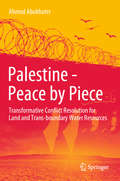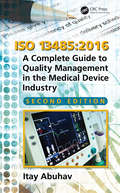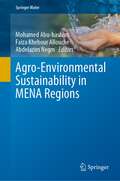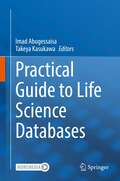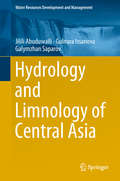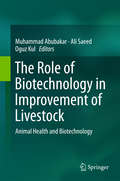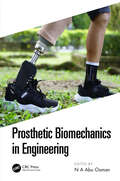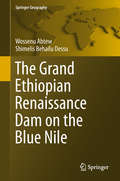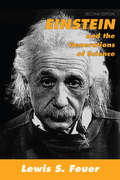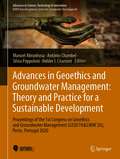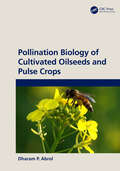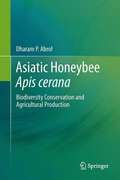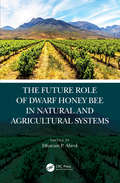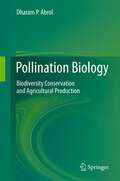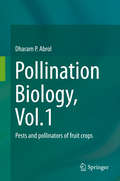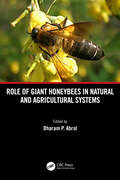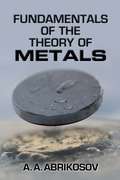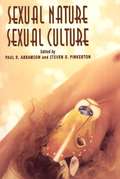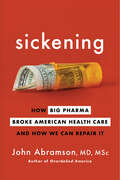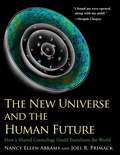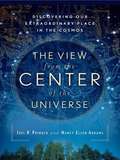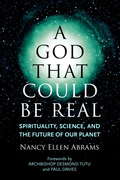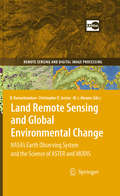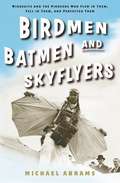- Table View
- List View
Palestine - Peace by Piece: Transformative Conflict Resolution for Land and Trans-boundary Water Resources
by Ahmed AbukhaterThis book draws lessons and conclusions, based on the methodology outlined in the author's previous book, Water as a Catalyst for Peace (Routledge, 2013), and further charts the course to a more practical framework for achieving regional stability and justice. Past agreements are examined and analysed, outlining the change along the way that occurred to the land and people of Palestine. The book is written with the intention of exposing past events that led to the current situation, evaluating the current state of the conflict in light of new circumstances and the reality on the ground. Viable options are explored to seek a practical and satisfactory negotiated settlement that ensures justice and viability. In conclusion, a roadmap for future direction is proposed to achieve equitable water allocation through proper negotiation between Israel and Palestine and to ultimately settle the conflict. Water resources allocation is at the heart of this pragmatic framework and roadmap.
ISO 13485: A Complete Guide to Quality Management in the Medical Device Industry, Second Edition
by Itay AbuhavSummary: This book provides valuable, effective guidance for understanding, interpreting and implementing ISO 13485:2016 standard requirements. Despite its more than 800-page length, the author has specifically designed its contents to maximize usability for the reader with a table of contents identical to that of the ISO standard itself, which enables easy navigation and orientation. Pragmatic in style and down to earth in tone, this book draws real-life examples and case-studies from the author’s many years of experience in consulting to illustrate even the most complex of ISO 13485:2016 standard requirements and their implementation. Identifying relevant requirements and how they harmonize with quality management systems, developing processes for design and development, as well as product realization and validation are just a few of the issues covered in-depth by this publication. In addition, the author constantly reviews the distinctive characteristics and aspects of the medical device manufacturing industry, so that the reader can also appreciate the subject of this book in an everyday context. Features: A pragmatic and down to earth approach towards the reader’s understanding of ISO 13485:2016 standard requirements implementation. Uses examples and cases from real-life based on the author’s many years of experience in quality management. A table of contents structured identically to that of ISO 13485:2016 itself, allowing easier navigation and orientation for the reader. Emphasises guidance for ISO 13495:2016 standard requirements which are difficult to interpret and implement Constantly reviews the aspect of medical device industry characteristics and distinctive so the reader can reflect the content with its daily work.
Agro-Environmental Sustainability in MENA Regions (Springer Water)
by Mohamed Abu-Hashim Faiza Khebour Allouche Abdelazim NegmThis book focuses on the status quo and the latest information on the water-soil-agriculture nexus in the MENA countries. It presents several case studies and applications from e.g. Morocco, Algeria, Tunisia, Egypt and Jordan, while also sharing and discussing the latest findings. The content includes a range of agriculture-related topics that focus on: water resources management, impacts of climate change, and wastewater treatment for reuse in agriculture sectors; in addition, sustainable approaches to agricultural-based industry, organic crop production, crop water requirements, and soil environment are discussed in an updated and comprehensive review. In turn, the book discusses the applications of GIS and remote sensing as a new technology for better agriculture management, as well as its use in Egypt as a representative country. In closing, it considers the implementation of an environmental information system in data-scarce MENA countries from the standpoint of the water-food nexus, and addresses the question of climate justice in the MENA region. Exploring various dimensions of MENA country-based case studies on achieving sustainable agriculture, the book offers an invaluable source of topical information for agricultural sustainability-related stakeholders in the region, researchers and graduate students alike.
Practical Guide to Life Science Databases
by Imad Abugessaisa Takeya KasukawaThis book provides the latest information of life science databases that center in the life science research and drive the development of the field. It introduces the fundamental principles, rationales and methodologies of creating and updating life science databases. The book brings together expertise and renowned researchers in the field of life science databases and brings their experience and tools at the fingertips of the researcher. The book takes bottom-up approach to explain the structure, content and the usability of life science database. Detailed explanation of the content, structure, query and data retrieval are discussed to provide practical use of life science database and to enable the reader to use database and provided tools in practice. The readers will learn the necessary knowledge about the untapped opportunities available in life science databases and how it could be used so as to advance basic research and applied research findings and transforming them to the benefit of human life.Chapter 2 is available open access under a Creative Commons Attribution 4.0 International License via link.springer.com.
Hydrology and Limnology of Central Asia (Water Resources Development and Management)
by Jilili Abuduwaili Gulnura Issanova Galymzhan SaparovThis book highlights the development of lake systems and water reservoirs as well as the impact of climate change on water resources in Central Asian countries. It provides information on the genesis of lake basins, physical and chemical properties of water in lakes, and the hydrological regimes (water balance and fluctuation levels) of lakes of Central Asia and Xinjiang. The book is useful for scientists and researchers whose work focuses on lakes and the use of natural resources, irrigation, hydropower and water supply, as well as for students and planners.
The Role of Biotechnology in Improvement of Livestock
by Muhammad Abubakar Ali Saeed Oguz KulThis book examines how biotechnology can improve livestock breeding and farming, and thereby also animal products. In the first chapters the reader will discover which techniques and approaches are currently used to improve animal breeding, animal health and the value of animal products. Particular attention is given to reproduction techniques, animal nutrition and livestock vaccines that not only enhance animal health but also have a significant effect on human health by ensuring safe food procurement and preventing zoonotic diseases. In addition, modern biotechnology can increase not only productivity but also the consistency and quality of animal food, fiber and medical products. In the second part of the book, issues such as how animal biotechnology could affect the environment and the important topic of animal waste management are explored. In the concluding chapter, the authors discuss future challenges related to animal biotechnology. This work will appeal to a wide readership, from scientists and professionals working in animal production, to those in farm animal management and veterinary science.
Prosthetic Biomechanics in Engineering
by Osman AbuProsthetic biomechanics is an interdisciplinary field of engineering, medicine, and biology, focused on enhancing people’s lifestyles. In the past 20 years, the field of prosthetic biomechanics and its potential have grown due to the support of advances in engineering technologies. Prosthetic Biomechanics in Engineering is about the recent advances in prosthetic engineering research. The scope of the book is focused on the design, development, and evaluation of a prosthetic systems that are being used in biomechanical applications. The book covers advanced materials, conceptual design, classification, ergonomics design applications, brain computer interface (BCI) system, motion analysis, postural stand stability, upper and lower limb prosthetics, types of suspension systems for prosthetics, Fiber Bragg Grating-based techniques, and pressure on the residual limb and the socket. The early chapters effectively describe new sensors for in-socket systems, new pylon material, and advanced gait analysis. Further chapters discuss advanced techniques for the design and development of prosthetics based on clinical and emergency uses. The information provided in this book is intended for researchers and investigators to encourage further advances in the field of prosthetics research, and for the development of rehabilitation equipment for the improvement of human health, and it: Presents recent advances in prosthetic biomechanics engineering research Discusses the design and development of limb prosthetic systems Explores advanced concepts of the prosthetic sockets Describes gait analysis of prosthetics and orthotics Dr Noor Azuan Abu Osman is a practicing engineer and Professor of Biomechanics with Department of Biomedical Engineering, Faculty of Engineering, University of Malaya, Malaysia.
The Grand Ethiopian Renaissance Dam on the Blue Nile (Springer Geography)
by Wossenu Abtew Shimelis Behailu DessuThis book is about the Grand Ethiopian Renaissance Dam newly being built on the Blue Nile, a transboundary river. Due to rising population and increasing water demand in the Nile basin, major projects raise interest and concern by millions with potential for water conflict. The dam design, reservoir filling policy, operation of the dam, riparian countries response, dam site importance and social impact and economy of the dam are presented in the book.
Einstein and the Generations of Science
by David AbshireThis absorbing intellectual history vividly recreates the unique social, political, and philosophical milieu in which the extraordinary promise of Einstein and scientific contemporaries took root and flourished into greatness. Feuer shows us that no scientific breakthrough really happens by chance; it takes a certain intellectual climate, a decisive tension within the very fabric of society, to spur one man's potential genius into world-shaking achievement. Feuer portrays such men of high imaginative powers as Einstein, Bohr, Heisenberg, de Broglie, influenced by and influencing the social worlds in which they lived.
Advances in Geoethics and Groundwater Management: Proceedings of the 1st Congress on Geoethics and Groundwater Management (GEOETH&GWM'20), Porto, Portugal 2020 (Advances in Science, Technology & Innovation)
by Manuel Abrunhosa António Chambel Silvia Peppoloni Helder I. ChaminéThis book gathers the peer-reviewed proceedings of the 1st congress on Geoethics & Groundwater Management (GEOETH&GWM'20), held in Porto, Portugal, in an online format on 18-22 May 2020. Hosted in School of Engineering (ISEP), Polytechnic of Porto based on Porto city (a UNESCO World Heritage Site), the international conference focused on what has now been dubbed “hydrogeoethics”, a novel transdisciplinary, scientific field integrating all dimensions of geoethics in groundwater science and practice. Given its scope, the book is of interest to all researchers and practitioners in the geosciences, hydrology, water resources, hydrogeology, natural resources management, environment, engineering, law, sociology, education, philosophy, culture, among others.This joint congress is the result of a collaborative agreement between the IAH (International Association of Hydrogeologists) and IAPG (International Association for Promoting Geoethics) and reflects the need for concerted actions to achieve sustainable development.The diversity, scale, significance and increasing magnitude of anthropogenic interactions with aquifers and groundwater, which often involve conflicting values or interests, call for analysis, discussions and decisions on the part of the agents involved, e.g. groundwater scientists, policymakers, managers, organisations, professionals and citizens. This approach calls for a responsible, sustainable and human approach to groundwater use and management.The groundwater community involved in the exploration and exploitation, use and management of this increasingly vital natural resource is becoming more and more aware that ethical issues pervade all our attitudes from concept to action and need to be addressed. Diverse values and cultures, science and education, law and policies, human and natural environments and the public and the economic sectors view groundwater and its value and/or role differently. The authors believe that in a globalised and interconnected world, common ground must be found in the interest of peace, human development and sustainability. The main topics covered here include:1. Fundamentals of hydrogeoethics: cultures, principles and geoethical values on groundwater science and engineering2. Lessons for a resilient and sustainable future with hydrogeoethics: case studies of geoethics in groundwater science-engineering, profession, and management3. Scientific and humanistic components of hydrogeoethics in groundwater education and professional training 4. Socio-hydrogeology and ethical groundwater management 5. Geoethics of decision making under uncertainty and ethical issues in neglecting groundwater functioning 6. Groundwater: geological, legal, social, and ethical challenges of a unique natural resource
Pollination Biology of Cultivated Oil Seeds and Pulse Crops
by DP AbrolThe book provides in detail information on pollination biology of oilseed and pulse crops. The book presents information on improving productivity of oilseed crops and pulses through planned pollination and safety of pollinators from pesticides. Covering the latest information on various major world oil crops and pulses, this book brings the latest advances together in a single volume for researchers and advanced-level students. The book will enlighten the readers with the latest technological developments in pollination of oilseed crops and pulses and shall be useful to agricultural and applied scientists, extension workers, policy planners, and policymakers to improve rural economy and conservation of global biodiversity.Salient Features Covers the latest information on various aspects of pollination biology of oilseed and pulses crops and brings the latest advances together in a single volume for researchers and advanced level students. An excellent source of advanced study material for academics, researchers, and students and program planners Provides an excellent source of livelihood through enhanced productivity of oilseed and pulse crops. Aims to promote a large, diverse, sustainable, and dependable bee pollinator workforce that can meet the challenge for optimizing production of oil and pulse crops well into the twenty-first century. The pollination requirements of most of the pulse crops have been reported to benefit production of pulse crops both qualitatively and quantitatively. This book will be useful for pollination biologists; honeybee biologists; scientists working in agriculture, animal behaviour, conservation, biology, and ecology; entomologists; environmental biologists, etc.
Asiatic Honeybee Apis cerana: Biodiversity Conservation and Agricultural Production
by Dharam P. AbrolDespite its economic usefulness, biodiversity of Asian hive bee Apis cerana is suffering precipitous decline and is threatened with extinction in its entire native habitat. Although a number of publications have appeared on honeybees in the market no attempt has been made to approach the subject in systematically and in a comprehensive manner in case of Apis cerana. There is still not enough knowledge on different facets of biological conservation, agricultural production and role in improving food security and livelihoods. An attempt has been made in this book to fill the gap by providing detailed information on different aspects of Apis cerana leading to sustainability and environmental protection. This book discusses information on varied aspects of Apis cerana biology, biogeography, reproduction, genetics, molecular phylogeny, interaction with other species, floral resources, dance language, safety from pesticides, management problems, loss of genetic diversity, behavioural defence, role in food production, livelihood security and conservation strategies for protecting biodiversity and enhancing crop productivity. The compilation of this book is unique in the sense that in the context of pollinator decline over the world, conservation of this species will be a step for sustaining food security.
The Future Role of Dwarf Honey Bees in Natural and Agricultural Systems
by Dharam P. AbrolThe future role of dwarf honeybees in natural and agricultural systems provides multidisciplinary perspective about the different facets of dwarf honeybees. The role of dwarf honeybee Apis florea assumes utmost importance in the context of pollinator decline throughout the world threatening stability of ecosystems and global food security. Apis florea is a low land species of south Asia extending more to the west than other Asiatic Apis species. It is an important pollinator of crops in hot and dry agricultural plains. The book is first of its kind which deals in details on varied aspects of Apis florea biology, management, conservation strategies for protecting biodiversity and enhancing crop productivity. The book aims to promote a large, diverse, sustainable, and dependable bee pollinator workforce that can meet the challenge for optimizing food production well into the 21st century. Features: Apis florea provides source of livelihood in mountainous areas and marginal farmers. This book will for the first time present the beekeeping from the perspective of agricultural production and biodiversity conservation An excellent source of advanced study material for academics, researchers and students and programme planners Excellent pollinator of tropical and subtropical crops fruits vegetables etc less prone to diseases and enemies Covering the latest information on various aspects of Apis florea biology, this book brings the latest advances together in a single volume for researchers and advanced level students This book will be useful to pollination biologists, honeybee biologists in entomology departments, students, teachers, scientists of agriculture, animal behaviour, botany, conservation, biology, ecology, entomology, environmental biology, forestry, genetics, plant breeding, horticulture, toxicology, zoology, seed growers and seed agencies and shall serve as reference book for students, teachers, researchers, extension functionaries and policy planners.
Pollination Biology
by Dharam P. AbrolThis book has a wider approach not strictly focused on crop production compared to other books that are strictly oriented towards bees, but has a generalist approach to pollination biology. It also highlights relationships between introduced and wild pollinators and consequences of such introductions on communities of wild pollinating insects. The chapters on biochemical basis of plant-pollination interaction, pollination energetics, climate change and pollinators and pollinators as bioindicators of ecosystem functioning provide a base for future insights into pollination biology. The role of honeybees and wild bees on crop pollination, value of bee pollination, planned honeybee pollination, non-bee pollinators, safety of pollinators, pollination in cages, pollination for hybrid seed production, the problem of diseases, genetically modified plants and bees, the role of bees in improving food security and livelihoods, capacity building and awareness for pollinators are also discussed.
Pollination Biology, Vol.1
by Dharam P. AbrolThe book covers interplay between pest management strategies and safety of pollinators. Detailed information is provided on pests and pollinators of temperate, subtropical and tropical fruit crops. Most of the fruit crops are highly cross pollinated and depend upon insects or benefit from insect pollination for fruit set. Insect pests on the other hand cause major economic damage on fruit crops in tropics, subtropics and temperate. Evidently, pest management in fruit crops on one hand and providing safety to the pollinators on the other is a challenging task in the context of increasing horticultural productivity without upsetting the ecological balance. This book aims to integrate and develop pest control strategies in a way to minimize their impact on beneficial insect species such as natural enemies and pollinators to enhance fruit production and quality. The book covers interplay between pest management strategies and safety of pollinators. Detailed information is provided on pests and pollinators of temperate, subtropical and tropical fruit crops. Pollinators play a crucial role in flowering plant reproduction and in the production of most fruits and vegetables. Most of the fruit crops are highly cross pollinated and depend upon insects or benefit from insect pollination for fruit set. Insect pests on the other hand cause major economic damage on fruit crops in tropics, subtropics and temperate. Evidently, pest management in fruit crops on one hand and providing safety to the pollinators on the other is a challenging task in the context of increasing horticultural productivity without upsetting the ecological balance. This book aims to integrate and develop pest control strategies in a way to minimize their impact on beneficial insect species such as natural enemies and pollinators to enhance fruit production and quality. Most of the fruit crops are highly cross pollinated and depend upon insects or benefit from insect pollination for fruit set. Insect pests on the other hand cause major economic damage on fruit crops in tropics, subtropics and temperate. Evidently, pest management in fruit crops on one hand and providing safety to the pollinators on the other is a challenging task in the context of increasing horticultural productivity without upsetting the ecological balance. This book aims to integrate and develop pest control strategies in a way to minimize their impact on beneficial insect species such as natural enemies and pollinators to enhance fruit production and quality. The book covers interplay between pest management strategies and safety of pollinators.
Role of Giant Honeybees in Natural and Agricultural Systems
by Dharam P. AbrolRole of Giant Honeybees in Natural and Agricultural Systems provides multidisciplinary perspective about the different facets of giant honeybees. Giant honeybees–Apis dorsata and Apis laboriosa are excellent pollinators of crops, fruits, and vegetables in cultivated and natural lanscapes. Their large size, long foraging range, and large work force make them the most spectacular of all honeybee species for crop pollination and honey production. Due to their decline, ecosystems and global food security are being threatened. This book is the first of its kind which deals in detail on varied aspects of giant honeybee biology, management, conservation strategies for protecting biodiversity and enhancing crop productivity. It aims to promote a large, diverse, sustainable, and dependable bee pollinator workforce that can meet the challenge for optimizing food production in 21st century. SALIENT FEATURES: Covers the latest information on various aspects of biology of giant honeybees and brings the latest advances together in a single volume for researchers and advanced level students Provides an excellent source of advanced study material for academics, researchers and students and programme planners Provides an excellent source of livelihood in mountainous areas and marginal farmers Deals with biology, management and conservation strategies for protecting biodiversity and enhancing crop productivity. Excellent pollinator of tropical and subtropical crops, fruits, vegetables, etc. less prone to diseases and enemies This book will be useful for pollination biologists, honeybee biologists, scientists working in agriculture, animal behavior, conservation, biology, ecology, entomologists, environmental biologists, etc.
Fundamentals of the Theory of Metals
by A. A. AbrikosovThis comprehensive primer by a Nobel Physicist covers the electronic spectra of metals, electrical and thermal conductivities, galvanomagnetic and thermoelectrical phenomena, the behavior of metals in high-frequency fields, sound absorption, and Fermi-liquid phenomena. Addressing in detail all aspects of the energy spectra of electrons in metals and the theory of superconductivity, it continues to be a valuable resource for the field almost thirty years after its initial publication. Targeted at undergraduate students majoring in physics as well as graduate and postgraduate students, research workers, and teachers, this is an essential reference on the topic of electromagnetism and superconductivity in metals. No special knowledge of metals beyond a course in general physics is needed, although the author does presume a knowledge of quantum mechanics and quantum statistics.
Sexual Nature, Sexual Culture (Chicago Series On Sexuality, History And Society)
by Paul Abramson Steven PinkertonIn this multidisciplinary study of human sexuality, an international team of scholars looks at the influences of nature and nurture, biology and culture, and sex and gender in the sexual experiences of humans and other primates. Using as its center the idea that sexual pleasure is the primary motivational force behind human sexuality and that reproduction is simply a byproduct of the pleasurability of sex, this book examines sexuality at the individual, societal, and cultural levels. Beginning with a look at the evolution of sexuality in humans and other primates, the essays in the first section examine the sexual ingenuity of primates, the dominant theories of sexual behavior, the differences in male and female sexual interest and behavior, and the role of physical attractiveness in mate selection. The focus then shifts to biological approaches to sexuality, especially the genetic and hormonal origins of sexual orientation, gender, and pleasure. The essays go on to look at the role of pleasure in different cultures. Included are essays on love among the tribespeople of the Brazilian rain forest and the regulation of adolescent sexuality in India. Finally, several contributors look at the methodological issues in the study of human sexuality, paying particular attention to the problems with research that relies on people's memories of their sexual experiences. The contributors are Angela Pattatucci, Dean Hamer, David Greenberg, Frans de Waal, Mary McDonald Pavelka, Kim Wallen, Donald Symons, Heino Meyer-Bahlburg, Jean D. Wilson, Donald Tuzin, Lawrence Cohen, Thomas Gregor, Lenore Manderson, Robert C. Bailey, Alice Schlegel, Edward H. Kaplan, Richard Berk, Paul R. Abramson, Paul Okami, and Stephen D. Pinkerton. Spanning the chasm of the nature versus nurture debate, Sexual Nature/Sexual Culture is a look at human sexuality as a complex interaction of genetic potentials and cultural influences. This book will be of interest to a wide range of readers—from scholars and students in psychology, anthropology, sociology, and history to clinicians, researchers, and others seeking to understand the many dimensions of sexuality.
Sickening: How Big Pharma Broke American Health Care and How We Can Repair It
by John AbramsonThe inside story of how Big Pharma&’s relentless pursuit of ever-higher profits corrupts medical knowledge—misleading doctors, misdirecting American health care, and harming our health. The United States spends an excess $1.5 trillion annually on health care compared to other wealthy countries—yet the amount of time that Americans live in good health ranks a lowly 68th in the world. At the heart of the problem is Big Pharma, which funds most clinical trials and therefore controls the research agenda, withholds the real data from those trials as corporate secrets, and shapes most of the information relied upon by health care professionals. In this no-holds-barred exposé, Dr. John Abramson—one of the foremost experts on the drug industry&’s deceptive tactics—combines patient stories with what he learned during many years of serving as an expert in national drug litigation to reveal the tangled web of financial interests at the heart of the dysfunction in our health-care system. For example, one of pharma&’s best-kept secrets is that the peer reviewers charged with ensuring the accuracy and completeness of the clinical trial reports published in medical journals do not even have access to complete data and must rely on manufacturer-influenced summaries. Likewise for the experts who write the clinical practice guidelines that define our standards of care. The result of years of research and privileged access to the inner workings of the U.S. medical-industrial complex, Sickening shines a light on the dark underbelly of American health care—and presents a path toward genuine reform.
The New Universe and the Human Future: How a Shared Cosmology Could Transform the World (The Terry Lectures Series) (The Terry Lectures Series)
by Nancy Ellen Abrams Joel R. PrimackA cultural philosopher and an astrophysicist attempt to decipher how we fit into the universe, and the impact our placement has on us. After a four-century rupture between science and the questions of value and meaning, this groundbreaking book presents an explosive and potentially life-altering idea: if the world could agree on a shared creation story based on modern cosmology and biology—a story that has just become available—it would redefine our relationship with Planet Earth and benefit all of humanity, now and into the distant future.Written in eloquent, accessible prose and illustrated in magnificent color throughout, including images from innovative simulations of the evolving universe, this book brings the new scientific picture of the universe to life. It interprets what our human place in the cosmos may mean for us and our descendants. It offers unique insights into the potential use of this newfound knowledge to find solutions to seemingly intractable global problems such as climate change and unsustainable growth. And it explains why we need to &“think cosmically, act globally&” if we're going to have a long-term, prosperous future on Earth.&“Should be read by anyone, not just scientists, who worry about the human condition.&”—Deepak Chopra, The Huffington Post&“A prophetic book. Its message ranks right up there with those of Isaiah, Jeremiah, Ezekiel, and Joel. Like the prophets, it is at times poetic, demanding, grounded, soaring, empowering, and always awe-inspiring.&”—Matthew Fox, Tikkun&“The ideas and images are fascinating and certainly contribute to a sense of the profound stakes involved in what we&’re doing to the planet and ourselves.&”—William Kowinski, North Coast Journal
The View From the Center of the Universe: Discovering Our Extraordinary Place in the Cosmos
by Nancy Ellen Abrams Joel R. PrimackIn this strikingly original book, a world-renowned cosmologist and an innovative writer of the history and philosophy of science uncover an astonishing truth: Humans actually are central to the universe.<P><P> What does this mean for our culture and our personal lives? The answer is revolutionary: a science-based cosmology that allows us to understand the universe as a whole and our extraordinary place in it. .
A God That Could Be Real
by Nancy Abrams Paul Davies Archbishop Desmond TutuA paradigm-shifting blend of science, religion, and philosophy for agnostic, spiritual-but-not-religious, and scientifically minded readers Many people are fed up with the way traditional religion alienates them: too easily it can perpetuate conflict, vilify science, and undermine reason. Nancy Abrams, a philosopher of science, lawyer, and lifelong atheist, is among them. And yet, when she turned to the recovery community to face a personal struggle, she found that imagining a higher power gave her a new freedom. Intellectually, this was quite surprising. Meanwhile her husband, famed astrophysicist Joel Primack, was helping create a new theory of the universe based on dark matter and dark energy, and Abrams was collaborating with him on two books that put the new scientific picture into a social and political context. She wondered, "Could anything actually exist in this strange new universe that is worthy of the name 'God?'" In A God That Could Be Real, Abrams explores a radically new way of thinking about God. She dismantles several common assumptions about God and shows why an omniscient, omnipotent God that created the universe and plans what happens is incompatible with science--but that this doesn't preclude a God that can comfort and empower us. Moving away from traditional arguments for God, Abrams finds something worthy of the name "God" in the new science of emergence: just as a complex ant hill emerges from the collective behavior of individually clueless ants, and just as the global economy emerges from the interactions of billions of individuals' choices, God, she argues, is an "emergent phenomenon" that arises from the staggering complexity of humanity's collective aspirations and is in dialogue with every individual. This God did not create the universe--it created the meaning of the universe. It's not universal--it's planetary. It can't change the world, but it helps us change the world. A God that could be real, Abrams shows us, is what humanity needs to inspire us to collectively cooperate to protect our warming planet and create a long-term civilization.From the Hardcover edition.
Land Remote Sensing and Global Environmental Change
by Michael J. Abrams Christopher O. Justice Bhaskar RamachandranLand Remote Sensing and Global Environmental Change: The Science of ASTER and MODIS is an edited compendium of contributions dealing with ASTER and MODIS satellite sensors aboard NASA's Terra and Aqua platforms launched as part of the Earth Observing System fleet in 1999 and 2002 respectively. This volume is divided into six sections. The first three sections provide insights into the history, philosophy, and evolution of the EOS, ASTER and MODIS instrument designs and calibration mechanisms, and the data systems components used to manage and provide the science data and derived products. The latter three sections exclusively deal with ASTER and MODIS data products and their applications, and the future of these two classes of remotely sensed observations.
Birdmen, Batmen, and Skyflyers: Wingsuits and the Pioneers Who Flew in Them, Fell in Them, and Perfected Them
by Michael AbramsThe Wright Brothers were wimps. Or so you might think after reading this account of their unsung but even more daring rivals--the men and women who strapped wings to their backs and took to the sky. If only for a few seconds. People have been dying to fly, quite literally, since the dawn of history. They've made wings of feather and bone, leather and wood, canvas and taffeta, and thrown themselves off the highest places they could find. Theirs is the world's first and still most dangerous extreme sport, and its full history has never been told. Birdmen, Batmen, and Skyflyers is a thrilling, hilarious, and often touching chronicle of these obsessive inventors and eccentric daredevils. It traces the story of winged flight from its doomed early pioneers to their glorious high-tech descendants, who've at last conquered gravity (sometimes, anyway). Michael Abrams gives us a brilliant bird's-eye view of what it's like to fly with wings. And then, inevitably, to fall. In the Immortal Words of Great Birdmen... "Someday I think that everyone will have wings and be able to soar from the housetops. But there must be a lot more experimenting before that can happen." --Clem Sohn, the world's first batman, who plummeted to his death at the Paris Air Show in 1937. "The trouble was that he went only halfway up the radio tower. If he had gone clear to the top it would have been different." --Amadeo Catao Lopes in 1946, explaining the broken legs of the man who tried his wings. "One day, a jump will be the last. The jump of death. But that idea does not hold me back." --Rudolf Richard Boehlen, who died of jump-related injuries in 1953. "It turned out that almost everyone from the thirties and forties had died. That just made me want to do it more." --Garth Taggart, stunt jumper for The Gypsy Moths, filmed in 1968. "You have to be the first one. The second one is the first loser." --Felix Baumgartner, who in 2003 became the first birdman to cross the English Channel.
